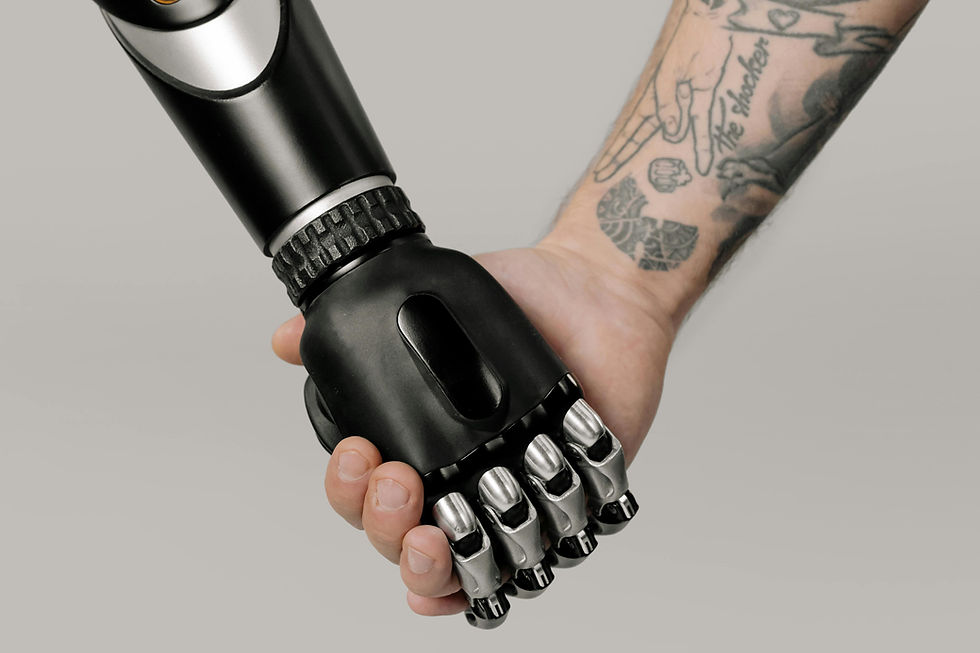53% of Mid-market and Scale-up Leaders Feel Unprepared for AI Adoption: How SHIFT Closes the Readiness Gap
- Gandhinath Swaminathan

- Aug 2
- 3 min read
Mid-market and scale-up leaders see the AI buzz and wonder: jump now or hold back? Waiting feels safer, yet Gartner says 15% of daily work choices will be made by agentic AI by 2028. Sitting still is the bigger risk. The hurdle isn't the tech—it's how you handle change.

The Comfortable Lie: Traditional Change Management Works
Most firms hire change consultants, roll out famous playbooks, and pulse-check "people engagement." McKinsey found only 26% of these overhauls stick and keep paying off.
Those tactics were built for an era of occasional, large-scale overhauls followed by long stability periods. Today's AI-driven environment demands continuous adaptation, not episodic change management.
AI Can Reveal Old Weaknesses
Employees know the drill: another plan, another slide deck. 37% percent resist outright; 73% feel real stress when the rollout begins. 74% percent say bosses don't grasp the reason for pushback. Leaders double down on more meetings instead of fixing the cause.
Most leaders approach AI like any other technology implementation: define requirements, select vendors, train users, go live. But AI changes how work gets done fundamentally, requiring new mental models, not just new skills.
Even worse, these approaches assume change happens in closed systems where initiatives can be contained and controlled. Reality operates differently. AI shift doesn't respect organizational boundaries—it affects customers, suppliers, competitors, and entire ecosystems simultaneously.
The Mechanism Alternative: Engineering Change That Sticks
Instead of managing change as a temporary disruption, successful organizations engineer change as a continuous capability. This requires shifting from project thinking to systems thinking, from compliance measurement to outcome engineering.
Amazon's Jeff Bezos understood this distinction:
Good intentions never work; good mechanisms do.
Mechanisms convert inputs to outputs reliably and repeatedly, unlike change initiatives that depend on sustained enthusiasm and perfect execution.
Buckminster Fuller, a distinguished futurist, hit the same point from another angle:
You never change things by fighting the existing reality. To change something, build a new model that makes the existing model obsolete.
The most effective AI shifts don't replace old processes—they create superior alternatives that people choose voluntarily. SHIFT turns those maxims into an engineering sequence that makes results inevitable, not optional.
The Five Moves of SHIFT: Engineering Change, Not Managing It
Scan – We start by spotting what’s already working and where a better model could win.
Harness – Together we define the prize in plain English and pick the single metric that will prove it.
Integrate – In 90 days you get a working upgrade to one live workflow, not a slide deck.
Feedback – Every two weeks we keep what lifts the metric, creating evidence based feedback loop.
Transform – The winning way spreads by reinforcing human-AI collaboration behavior; the old way fades.
Scores That Matter
Traditional change management measures activity. SHIFT measures outcomes through two lenses:
North Star Metric: A single measure capturing core customer value linked directly to revenue or retention—like first-call fix rate or days-to-invoice. We publish weekly trends and tie our fees to this metric.
Quarterly OKRs: Break the rollout into manageable targets while maintaining focus on the North Star.
Here are some examples:
Outcome Lens | Example NSM | 180-Day Target | Check Rhythm | Business Impact |
Service speed | First-call fix rate | 70% | Weekly board | Customers stay, churn drops |
Cash flow | Days-to-invoice | −25% | Sprint review | Frees working capital |
Staff uptake | Active users on new tool | 75% inside 30 days | Daily pulse | Resistance melts early |
Habit strength | ADKAR heat-map score | ≥ 4/5 by month 4 | Monthly survey | Skills stick past training |
Beyond Tool Adoption
Real payoff comes when people see themselves working with AI, not around it. Prosci data shows projects with tight change support are 7x (seven times) more likely to win. SHIFT links mindset shifts to everyday use, so identity and workflow rise together.
Your Next Step
AI will reshape your space whether you act or not. The only question: will you guide the shift or chase it?
SHIFT methodology provides the systematic approach for mid-market companies ready to move beyond traditional change management toward change engineering. The six-month intensive program includes:
90-day pilot with live mechanism deployment targeting your specific AI opportunity
Weekly metric broadcasting that tracks real business outcomes, not activity measures
Risk-shared pricing where our success depends on your measurable results
The true value of our change management program is that it builds a foundation for the future. By focusing on capability building, we ensure your business continues to generate value and lead with AI long after our engagement is complete.


Comentarios